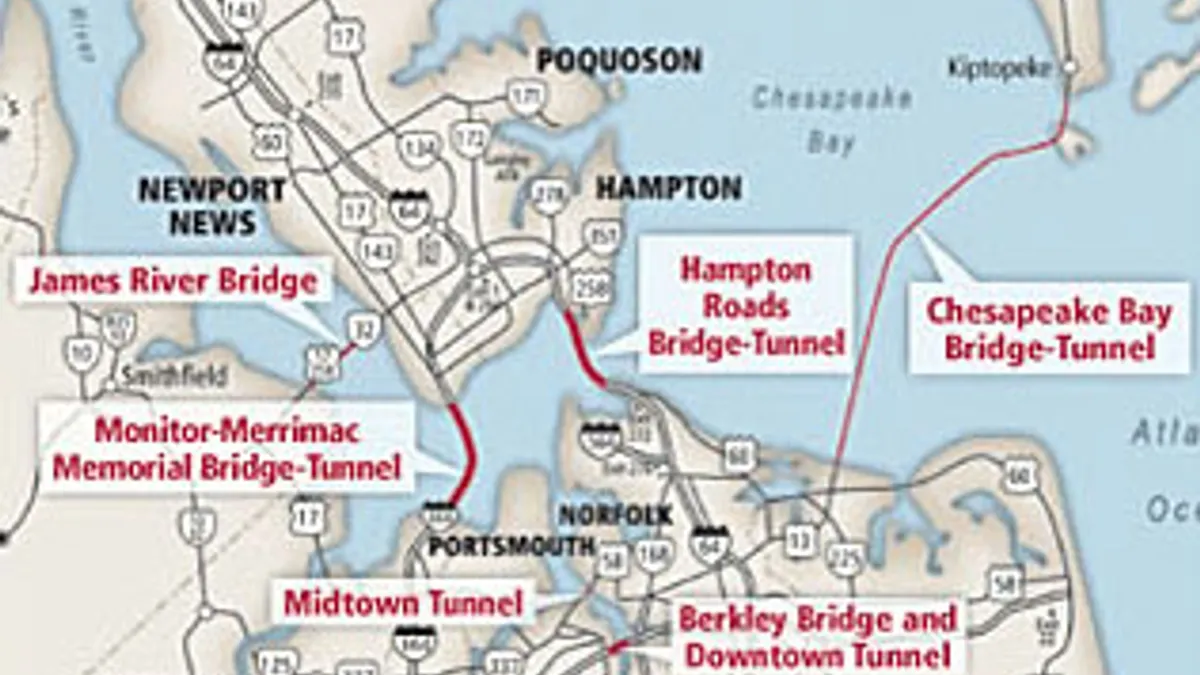Dive Brief:
- The ASCE Infrastructure Report of 2017 grades America's ports at a C+, and her inland waterways at D, the Society reported.
- While marine ports and inland waterways receive $22 billion in funding, there still remains a shortfall of $15 billion. Combined, the two contribute $4.6 trillion or 26% to the American economy.
- Inland waterways support the transport of roughly 600 million tons of cargo per year, or 14% of over all domestic freight, while 99% of all American exports pass through her 926 ports.
Dive Insight:
Inland waterways, with their D grading, are suffering more than ports. At present, roughly 49% of vessels passing through their 25,000 miles and 239 locks experience delays as a result of poor conditions, often related to age, as most waterways have well exceeded their 50 year expected life spans.
To raise the waterways' D grade, the ASCE recommends giving the U.S. Army Corps of Engineers (USACE) contract authority for projects to avoid the stop-and- start of construction occurring due to the appropriations process. Also, funding for waterways projects should occur at authorized levels, with the passage of a Water Resources Development Act on a two-year cycle. The Inland Waterways Trust Fund should be used appropriately, with increases to the amount spent on operations and maintenance of the inland waterways each year. When useful, alternative financing and delivery methods, such as public-private partnerships, should be applied. Finally, the development and implementation of a standardized measurement for delays on the system should be created, to better track and inform traffic.
C+ rated ports also received action-oriented suggestions from the ASCE. Namely, there should be increased over all investment into the freight program, to ensure ports can effectively distribute and receive goods as ships continue to grow in size. And in keeping with that increased investment, appropriate funds should be funneled to authorized projects to ensure that freight movement is neither delayed nor stifled. Ports should also be involved as states create and execute freight plans.
Finally, the adoption of new technologies should be funded in order to reduce wait times at docks, boost efficiency, and increase security. Freight and landside connections must be strengthened throughout the entire freight system to reduce costly congestion situations.













